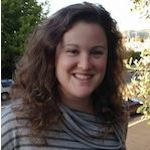As information technology continues to penetrate traditional industry sectors like transportation, the innovations just keep on rolling in. The latest case in point comes from a San Francisco-based start-up, StreetLight Data, co-founded by Richmond native Laura Schewel.
StreetLight Data combines a variety of data sources — wireless data, GPS navigation data, Census data — to infer mobility patterns in the United States. Providing a more detailed and nuanced understanding of where people travel, Schewel believes, will help retailers make more intelligent decisions about where to locate and will enable planners to make better decisions about where to invest transportation infrastructure dollars.
The company is new — founded in 2011, it announced its first round of venture funding this April — but it has some success stories already. Schewel cites how StreetLight data was used in an urban redevelopment project in Oakland. A group was trying to get retailers and restaurateurs to move into a depressed part of the city without much luck. The demographics of the people who lived there were unattractive from a business viewpoint. But StreetLight’s analysis showed that an affluent population that worked downtown and enjoyed a hip nightlife drove through the area every day. “Suddenly,” she says, “they had an attractive location to sell as opposed to a dangerous location.”
StreetLight Data’s main selling proposition is to retailers. Traditionally, retailers have relied upon demographic data regarding where customers live to inform decisions about where to locate stores. Now, thanks to StreetLight Data, they can base location decisions on the basis of the routes people travel. The data also can be used to target online advertising to the workplaces of people who pass by their stores on the way home from work.
A socially beneficial outcome would be if retailers placed stores in locations that enabled people to drive less, says Schewel, whose passion for transportation analytics grew out of a concern about climate change and a desire to reduce automobile C02 emissions. “If you drive the same drive home from work every day, it’s better for you if a grocery store opens up on your route,” she says. “You can chain your trips together. You can reduce extra trips.”
Transportation accounts for 70% of the nation’s oil consumption and one third of its climate emissions. Shopping-related driving accounts for 20% of all vehicle miles driven. In theory, aligning the incentives of drivers and stores will help change behavior, she says. “The American marketing system is the most powerful force of behavior change in the world.”
The company also has applications for urban planning and transportation engineering to better align transportation investments with how people use their streets and roads. State departments of transportation make decisions in a fog. They base investment decisions on traffic counts at specific locations and survey data. “They miss nuances,” says Schewel. “They really don’t know what happens after they institute a new policy. They can’t measure the before and after very clearly. We can.”
StreeetLight Data is crunching numbers that will result in a series of white papers later this year. Two of them will be set in Virginia. Unlike many state DOTs, whose data is inaccessible, the Virginia Department of Transportation puts it online and makes it easy to download. Thanks to that transparency, StreetLight Data is doing a lot of its validation on new data sets here in Virginia. “The state data is so good.”
Bacon’s bottom line: Roads are getting smarter — more sensors, more cameras, more data. Now our analytics are getting smarter. Perhaps the most remarkable thing about StreetLight Data is that it provides a feedback loop to connect transportation decisions with land use decisions. We are on the verge of a remarkable transformation.



